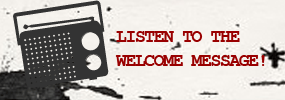Philosopher A C Grayling wonders about art.
Art might be our language’s most controversially difficult word to define, but one thing that has never been a necessary part of its definition, whatever else is understood by it, is that something can count as art only if it is nice, soothing, pleasant, unshocking, good mannered and safe. A crucified frog, a horribly jerking body in an electric chair, a waxwork of Hitler, goldfish swimming in a blender about to be turned on, are all in various ways and to various extents disagreeable, some of them more so to some people than to others, but this fact alone does not prevent them from being art if they are art.
But, in a letter sent to The Art Paper for publication, Jane Kallir of the Galerie St. Etienne gets to the point.
In his Op-Ed commentary on Marco Evaristti¹s “Helena” (in which viewers are invited to puree goldfish in a blender), A.C. Grayling makes a specious comparison to the work of the French Impressionists. Yes, we all know that tastes change over time, and what was once shocking is in some cases today highly valued. But the blenderized fish are not shocking in the same way that Impressionism, Expressionism, Dada or any number of earlier art movements were shocking in their day. Evaristti¹s piece is shocking because it is murder, albeit of an allegedly inferior species. It is true that those of us who are not vegetarians condone the killing of animals for food (and in fact the conditions in most slaughterhouses are arguably crueller than those in the lobster pot or blender), but killing for art is gratuitous and obscene. Bear-baiting and cock-fighting are no longer legal in most Western countries, because most of us believe that animals should not be tormented or killed purely for entertainment. In recent years, we have become increasingly cognizant of the genetic, cognitive and emotional ties than bind human and non-human animals, and as a result, efforts have been made to reduce or eliminate many forms of animal cruelty. It is indeed possible that a hundred years hence, it will be commonplace to kill animals for art’s sake, but if so, the human race will have taken a huge moral step backwards.

